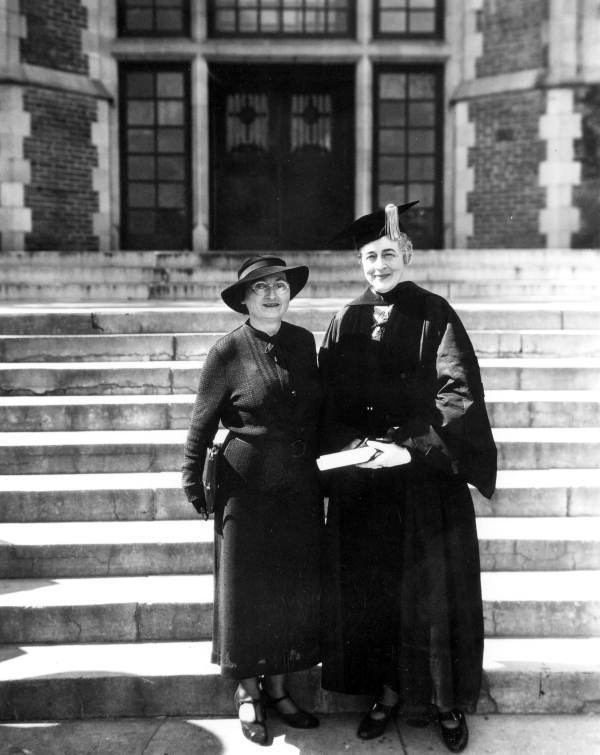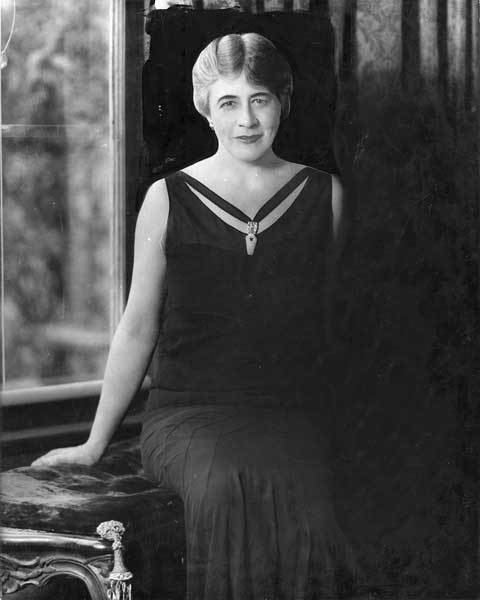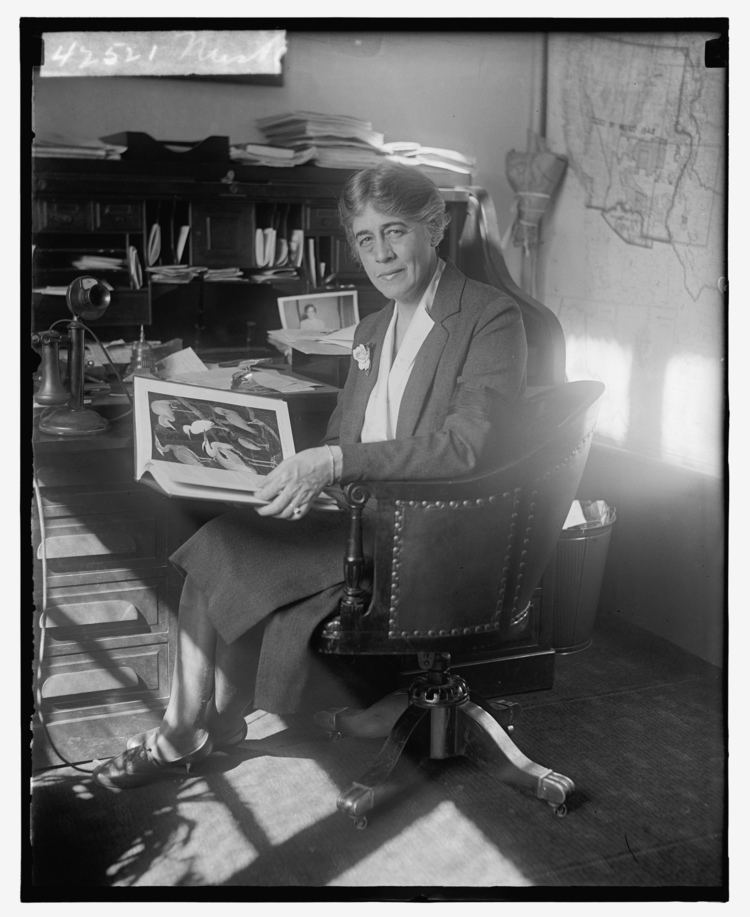Name Ruth Owen | Children John Bryan Succeeded by J. Mark Wilcox | |
 | ||
Preceded by Frederick W. B. Coleman Born October 2, 1885Jacksonville, Illinois ( 1885-10-02 ) Parents Mary Baird Bryan, William Jennings Bryan Grandparents Silas Bryan, Mariah Elizabeth Bryan Similar People William Jennings Bryan, William Homer Leavitt, Silas Bryan, Charles W Bryan | ||
Succeeded by Alvin Mansfield Owsley | ||
Eleanor roosevelt attends wedding of us ambassador to denmark ruth bryan owen in hd stock footage
Ruth Baird Bryan Leavitt Owen Rohde, best remembered as Ruth Bryan Owen, (October 2, 1885 – July 26, 1954) was a politician and the first woman appointed as a United States ambassador. The daughter of attorney William Jennings Bryan and Mary E. Baird, she was a Democrat, who in 1929 was elected as Florida’s (and the South's) first woman US Representative, coming from Florida’s 4th district. Representative Owen was also the first woman to earn a seat on the House Foreign Affairs Committee.
Contents
- Eleanor roosevelt attends wedding of us ambassador to denmark ruth bryan owen in hd stock footage
- Us president franklin roosevelt attends the wedding of ruth bryan owen to danish hd stock footage
- Early years
- Filmmaking career
- Political career
- First US female ambassador
- Later years death and legacy
- Works
- Filmography
- References

In 1933, she became the first woman to be appointed as a U.S. ambassador, when President Franklin D. Roosevelt selected her as Ambassador to Denmark and Iceland.

Us president franklin roosevelt attends the wedding of ruth bryan owen to danish hd stock footage
Early years

Ruth Bryan was born on October 2, 1885 in Jacksonville, Illinois to William Jennings Bryan and his wife Mary E. Baird. Ruth's father was an attorney and three-time presidential candidate. Growing up Ruth had to move several times depending on her father's work in politics. Ruth attended public schools in Washington, D.C and the Monticello Female Academy in Godfrey, Illinois. In 1901 she began to take classes at the University of Nebraska.

In 1903 Bryan dropped out of the University of Nebraska to marry William H. Leavitt, a well-known Newport, Rhode Island portrait painter. The couple met when he was painting Bryan's father's portrait. The couple had two children before divorcing in 1909.
Bryan married Reginald Owen, a British Army officer, in 1910, and had two more children with him. Her second husband died in 1928. She spent three years in Oracabessa, Jamaica, where she oversaw the design and construction of her home, Golden Clouds. It is now operated as a luxury villa. Owen kept her home in Jamaica for more than three decades and spent many winters there, particularly in later years when she lived in Denmark and New York City. She detailed her time in Jamaica and experiences at Golden Clouds in her book, Caribbean Caravel.
During World War I, Bryan served as a war nurse in the Voluntary Aid Detachment in the Egypt–Palestine campaign, 1915–1918.
Filmmaking career
Ruth Bryan Owen was a female pioneer in the film industry. She was a director, producer, and screenwriter for a feature film in 1922, called Once Upon a Time/Scheherazade, which is now considered to be lost. In the spring of 1921, she started production of Once Upon a Time. The film featured the Community Players of Coconut Grove, Florida, and was not related to a major studio at the time.
The story line was said to revolve around a shah who is dethroned by his jealous subordinate, who in turn uses his new power to torture young women who do not amuse him. Towards the end, the sadistic ruler runs into the most beautiful one of all, and the exiled shah returns just in time to save the young woman from his nemesis. According to the Moving Picture World, the costuming was ornate and elaborately done, the staging was complicated, and the mise-en-scène evoked an "atmosphere of experience in the Far East". Owen had done extensive traveling, and visited countries such as India, Burma, Sri Lanka, China and Japan. Inspired by these places, she used them as the backdrop for her film.
Little would be known about the film except that Owen discussed it in correspondence with her friend, Carrie Dunlap. Dunlap was from Illinois and served as campaign treasurer for Ruth's father William Jennings Bryan. In her letters to Dunlap, Owen expresses great joy in her film, quoting, “I can scarcely believe the film is mine when I see it ‘projected’ on the wall above our fireplace.”
She thought of herself as a true pioneer in the industry. Her correspondence with Dunlap also revealed her intent to become one of the first female filmmakers in the U.S. Owen funded the film solely from her earnings in the public speaker circuit. In her letters, Owen discussed the support she gained from the General Federation of Women’s Clubs, and their contribution to help secure a distribution deal with the Society for Visual Education.
Political career
Owen first ran for office in 1926 for the Democratic nomination for Florida's 4th congressional district. It was a year after the death of her father. It then included nearly the entire east coast of the state from Jacksonville to the Florida Keys: with Miami, Orlando and St. Augustine. She lost by fewer than 800 votes.
From 1925 to 1928, she was an administrator at the University of Miami.
Two years later, after the death of her husband, she ran again. Since Owen played a significant role when hurricane hit Miami in 1927 and put effort on promotions on newspapers, she won over Sears by more than 14,000 votes [1] and was elected to Congress in November 1928 and began her term of office on March 4, 1929, while a widow and mother of four. Her election was contested on the grounds that she had lost her citizenship by marrying an alien. By the Cable Act in 1922, she could petition for her citizenship, which she did in 1925, less than the seven years required by the Constitution. She argued her case before the House Committee on Elections, saying that no American man had ever lost his citizenship by marriage. She said that she lost her citizenship because she was a woman, not because of her marital status. The U.S. House of Representatives voted in her favor.
Owen ran for re-election in 1930, defeating Daytona Beach attorney Dewitt T. Deen by a wide margin in the June Democratic primary election. As the Republican Party was running its first primary campaign in Florida history in 1930 and did not nominate a candidate to run against the Democratic nominee, the pro-prohibition Owen was heralded in the press as presumably having won re-election by virtue of her Democratic nomination.
Owen's two-year term won in 1930 would prove to be her last, however, as in the 1932 Democratic primary she was defeated by Democratic candidate J. Mark Wilcox, who advocated the repeal of Prohibition. Her Congressional career thus came to an end in March 1933.
First U.S. female ambassador
From 1933 to 1936 Bryan Owen served as United States Ambassador to Denmark, appointed by President Franklin D. Roosevelt. She served successfully until 1936, when she married Borge Rohde, a Danish Captain of the King's Guard, on July 11. The marriage gave her dual citizenship as a Dane--in addition to that of the United States--so she resigned her ambassadorial post in September. Ruth Bryan Owen married Captain Borge Rohde at the estate of President Franklin Delano Roosevelt and Eleanor Roosevelt in Hyde Park, New York. Fannie Hurst, noted novelist and close friend of the bride, was matron of honor. Mrs. Owen announced that she would retain her own name in her diplomacy and literary careers.
She served as a delegate to the San Francisco Conference, which established the United Nations after World War II. In 1948, President Truman named her an alternate delegate to the U.N. General Assembly.
Later years, death and legacy
In 1939, Ruth Bryan Owen and her husband purchased "The Cedars", located at Alderson, West Virginia, and began making repairs. They sold the property in 1945. It was listed on the National Register of Historic Places in 1978.
Owen died July 26, 1954 in Copenhagen, Denmark, and was cremated. Her ashes were interred at Ordrup Cemetery, Copenhagen.
In 1992, Owen was inducted into the Florida Women’s Hall of Fame.
